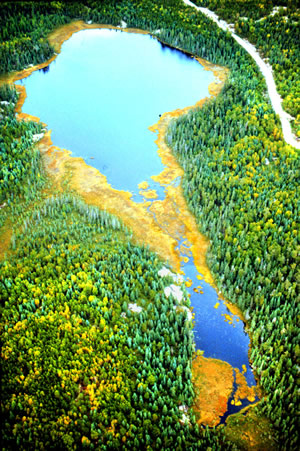National Scale Assessments
One of the long-term goals of the Mercury in Aquatic Ecosystems project is to seek opportunities to provide “big picture” views of mercury contamination across the US. This goal was initiated in the mid 1990’s when availability of reliable mercury and methylmercury data were very limited. Although the great growth in the number of researchers studying environmental mercury pollution has increased substantially since then, few groups can offer national scale data bases with the consistent approaches and data archiving of the USGS MRT. Opportunities to collect information at regional and national scales are rare, but the MRT has assembled numerous of these data sets largely through collaborations with other state and federal agencies. The first national scale assessment was a collaboration of the TOXICS-NAWQA programs to sample over 100 streams from 22 watersheds across the US (http://wi.water.usgs.gov/mercury/national-mcae.html), Krabbenhoft et al., 1999; Brumbaugh et al., 2001). This study was the first of its kind and offered some of the first indications of national scale trends in mercury and methylmercury across the US. Next, the MRT collaborated on three regional scale lake assessments: (1) the Western Lakes Survey (http://wi.water.usgs.gov/mercury/highalpinelakes.html); (2) the Eastern Lakes Survey; and, (3) the Midwestern Lakes Survey. More recently, we have collaborated with the USEPA on a national scale sampling of lake sediment from about 1,000 lakes across the US (will provide URL of the 2007 National Lakes Survey). Finally, the MRT will soon publish the results of a long-term goal to develop a national scale methylmercury prediction model for surface waters across the contiguous US. This model, which is based on the use of widely available “predictor variables” (pH, dissolved organic carbon, sulfate and wetland abundance) is capable of providing estimates of methylmercury concentrations from areas were there are no existing data and provides the first complete view of methylmercury trends across the US.
|

